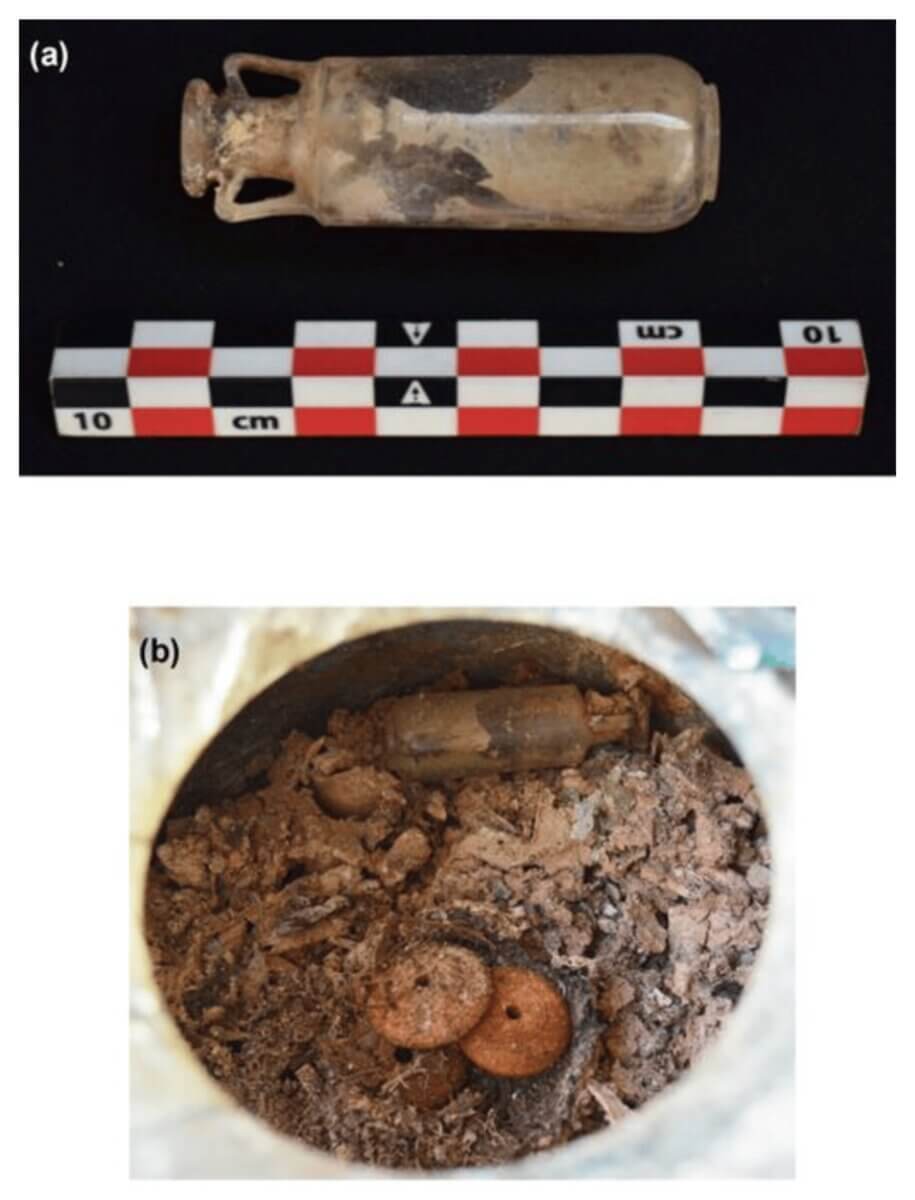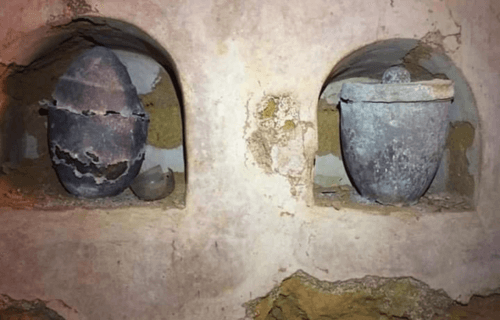CORDOBA, Spain — The scent of ancient Rome has been brought to life after researchers opened a sealed vial of Roman perfume from around the era of Christ. Surprisingly, it appears that a scent similar to patchouli oil would have pervaded the air 2,000 years ago.
The vial was kept perfectly sealed with a dolomite stopper, a form of carbon, and tightly covered with bitumen. This contributed to the “extraordinary” preservation of the content in the tiny glass container. This container was discovered in 2019 during an archaeological excavation in a mausoleum unearthed during a home construction project on Calle Sevillat. The site is located in Carmo, known today as Carmona, near Seville in Spain. The ointment inside was preserved and solidified within a quartz vessel that remained impeccably sealed.
The tomb appeared to be a communal burial site, likely belonging to a wealthy family. Alongside numerous items associated with burial rituals, six cinerary urns were found, containing the remains of three men and three women. Within one of the glass urns, which held the cremated skeletal remains of a woman between 30 and 40 years-old, a cloth bag was found. The bag contained three amber beads and a small quartz flask carved into the shape of an amphora, holding the ointment.
The truly extraordinary facet of this discovery was the perfectly sealed nature of the container and the preservation of the solid perfume residues inside, which allowed for a detailed study of its composition.

Professor of Organic Chemistry at the University of Cordoba, José Rafael Ruiz Arrebola, analyzed the sample. He and his team utilized X-ray diffraction and gas chromatography coupled with mass spectrometry to discern the components of the perfume.
The researchers discovered that the small cylindrical stopper was made of dolomite and was perfectly fit and sealed with bitumen. Two key components of the perfume were identified: a base or binder, which helped to preserve the aroma, and the essence itself.
The binder was vegetable oil, possibly olive oil, as suggested by the analysis. The essence was found to be patchouli, an essential oil derived from a plant of Indian origin. Patchouli is widely used in modern perfumery, but its usage during Roman times was previously unknown.
The grand nature of the tomb, and particularly the material used to make the vessel holding the perfume, indicate that this was a product of significant value.
The study is published in the journal Heritage.
You might also be interested in:
- How has ancient Roman cement stood test of time so well? Scientists finally have an answer after 2,000 years!
- Game of thrones? Just 1 in 4 Roman emperors died of old age
- Plant extract that gives perfumes their floral scent may help cure Parkinson’s disease
South West News Service writer Jim Leffman contributed to this report.

